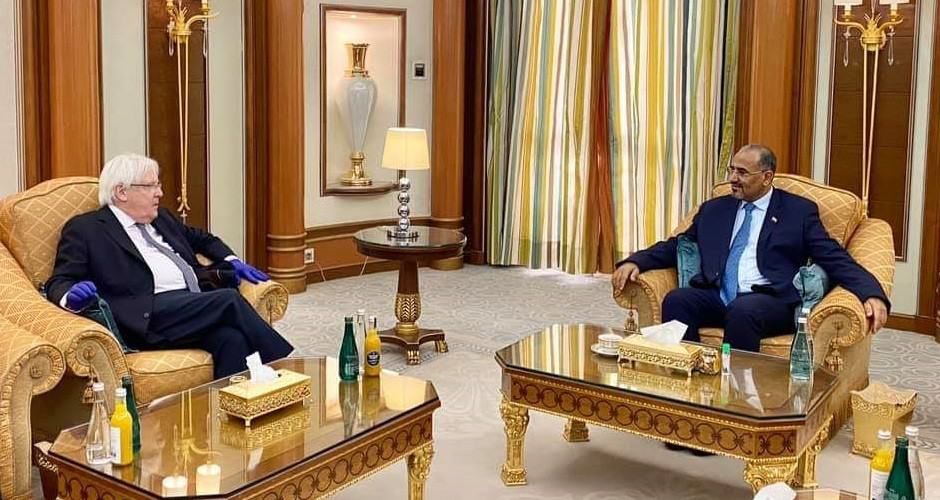
02-08-2020 الساعة 2 مساءً بتوقيت عدن
Reactivating the 2019 accord is a promising step that could ease tensions in south Yemen and advance wider national negotiations, but only if coalition members are able to put its detailed requirements into effect.´
Elana DeLozier and Zied Bouchlaghem
Saudi Arabia has once again breathed life into the Riyadh Agreement, the accord signed nine months ago to bring Yemen’s national government and the Southern Transitional Council (STC) into a power-sharing arrangement. The deal was originally intended to mend coalition divisions that threatened to hinder the fight against the Houthis, but it slowly unraveled amid persistent tensions between the STC and President Abdu Rabu Mansour Hadi’s government. In the early hours of July 29, Saudi Arabia announced a new plan to get the process back on track, which Hadi and the STC accepted publicly.
Although the move will allow the parties to lock in the political gains they achieved when the agreement was originally signed, the proof will once again lie in whether they can overcome the tall obstacles to implementation. The latest plan focuses on sequencing, a crucial detail lacking in the original agreement. It also provides some immediate political wins—perhaps Riyadh’s way of incentivizing the parties to take on the harder task of drawing back their military forces.
PREVIOUS IMPLEMENTATION DIFFICULTIES
When the original agreement was signed in November, observers feared that its vague language would complicate implementation, and these fears were quickly realized. The process stalled throughout late 2019 and into 2020, with the STC reportedly pulling out of the implementation committees in January. Later, the Hadi government barred a delegation of STC officials from returning to Aden in March, and the STC retaliated by blocking the return of Hadi’s prime minister, Maeen Abdulmalik Saeed.
By April, STC-linked forces were agitating because the United Arab Emirates had stopped their salary payments a few months prior, and because local citizens were suffering under devastating floods. With their leaders unable to return to Aden and likely nervous about losing legitimacy on the ground amid these developments, the STC declared “self-administration” on April 26. Although not a secession announcement, the move was seen as an egregious affront to the Hadi government’s legitimacy. On May 11, Hadi’s forces launched an unsuccessful offensive to retake parts of Abyan province from STC control. In the weeks of clashes that followed, neither side was able to make substantial gains until the STC seized political control of Socotra on June 20.
THE NEW PLAN
In response to these confrontations, Saudi officials have led negotiations to reset the Riyadh Agreement since late May. The resultant plan is not a new agreement, but rather a mechanism to facilitate and sequence initial implementation of the original accord.
Under the new plan, the STC agreed to end its self-administration of the south, while Hadi agreed to appoint a new governor and head of security in Aden province. Thereafter, forces on both sides must move back to their previous locations, which largely means redeploying out of Aden and Abyan provinces. Once these moves are complete, Prime Minister Abdulmalik must form a new cabinet evenly split between northerners and southerners, with the STC guaranteed several of the southern seats.
All of this is supposed to happen within a tight thirty-day window. The parties will then be expected to implement the rest of the Riyadh Agreement under similarly tight timelines—namely, collecting all medium and heavy weapons for storage in Aden; integrating the STC’s political, security, and military forces under a single, national command; and restoring government control over seized facilities and institutions.
Hadi has already taken the first step of appointing a new governor and security chief in Aden. These positions are fraught with symbolism because they have become immutably connected to the rancorous Hadi-STC dispute, so recounting their recent history is illuminating.
In December 2015, Hadi appointed Aidarous al-Zubaidi and Shallal Shayea to these posts—a surprising move given their mutual enmity toward the president. As most Yemenis are well aware, Hadi was aligned with the camp whose forces killed Shayea’s father in 1986, during a massacre that wound up sparking a deadly war in the south and led to Hadi’s exile. Accordingly, observers speculated that Zubaidi and Shayea’s political friends in the UAE may have played a role in their selection. In any case, tensions were obvious throughout Zubaidi’s term as governor until Hadi finally dismissed him in April 2017; Zubaidi then set up the STC in May. Later, Shayea began openly attending STC meetings before he, too, was removed as security chief in August 2019, following another round of conflict between government and council forces.
Thus, it is notable that Hadi’s new selection for governor is Ahmed Hamed Lamlas, who is close to Zubaidi and serves as secretary-general of the STC’s Presidential Council. Previously, he served as governor of Shabwa province from 2016 to 2017.
The new head of security in Aden—Ahmed Mohammed al-Hamdi—is more of a compromise candidate. One former Yemeni official described him as a “career law enforcement” figure who represents a safe, nonpolitical choice for both sides. He has served as security chief in Hadramawt province since 2002 and previously worked in the Interior Ministry for almost two decades.
POLITICAL IMPLICATIONS
All parties stand to gain politically from the reactivated Riyadh Agreement. President Hadi benefits because the STC is upholding an agreement that explicitly recognizes his side as Yemen’s only internationally legitimate government. And although the STC must step away from self-administration, it gets to place one of its own in the Aden governor’s seat and will join Hadi’s side in final UN-led negotiations with the Houthis. This is probably the best that both sides can hope for, since neither was able to defeat the other on the southern battlefield.
Yet the STC’s secessionist goals are unlikely to dissipate—in fact, the council may hope that joining Hadi’s government will give it sufficient legitimacy to pursue a secession bid down the road. The official STC statement on the reactivated agreement affirms that the council will not back down from its ultimate goal of statehood. The STC leadership—which has popular support in segments of the south but not universal appeal—sees secession as a long-term ambition better achieved through a political process than a unilateral declaration. In that spirit (and probably to quell any discontent among hardcore secessionists), one STC official tweeted after the announcement that restoring a southern state requires “patience and self-restraint.”
Other deep disagreements persist as well—for instance, the STC’s July 29 statement does not even mention the Hadi government, whose own official statements on the matter have pointedly emphasized the “unity” of Yemen. Yet the mechanism could still constitute a major win just by unlocking some aspects of the long-stalled Riyadh Agreement, such as forming a joint government and preventing further intra-coalition military clashes. It could also allow coalition members to refocus on their common adversary, perhaps via more concerted efforts to push back against Houthi attempts to take more territory. Finally, successful implementation would bless Saudi Arabia with a much-needed diplomatic accomplishment, allowing its leadership to pivot to talking with the Houthis and buttressing UN negotiations aimed at ending the overall Yemen war.
Elana DeLozier is a research fellow in The Washington Institute’s Bernstein Program on Gulf and Energy Policy. Zied Bouchlaghem is a research assistant at the Institute.
source: Washington Institute

قبل 3 أشهر

قبل 3 أشهر